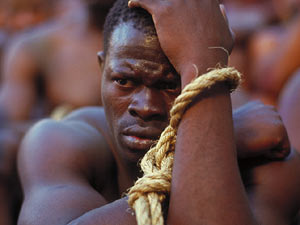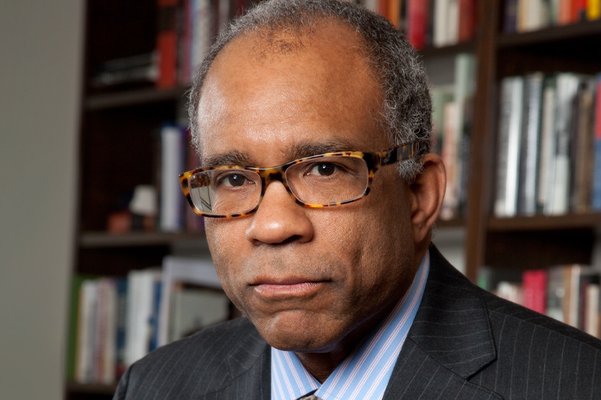4. . Name two lasting effects of the Amistad incident on the United States.
Suggested Response:
First, the publicity over the fate of the Amistad Africans brought to the public’s attention the logical fallacy of treating black people born in Africa as free, while blacks born in the U.S. were enslaved for life. This turned many in the North against slavery. The second lasting effect was that the committee of abolitionists formed to defend and care for the Amistad Africans stayed together and eventually became the American Missionary Association. The AMA lasted for one hundred years. It sent missionaries to Africa and founded hundreds of schools and ten colleges in the U.S. For more details, see Helpful Background Section.
5. What was the legal basis cited by the Supreme Court to justify freeing the Amistad Africans?
Suggested Response:
The Africans on board the Amistad had been seized and transported to Cuba, a Spanish territory, after Spain had outlawed the slave trade. Spanish law governed their status and declared that they were free. The Court stated that:
They are natives of Africa, and were kidnapped there, and were unlawfully transported to Cuba, in violation of the laws and treaties of Spain, and the most solemn edicts and declarations of that government. By those laws, and treaties, and edicts, the African slave trade is utterly abolished; the dealing in that trade is deemed a heinous crime; and the negroes thereby introduced into the dominions of Spain, are declared to be free. The Amistad, 40 U.S. 518, 593.
6. What was the basis for the claim presented in court by the American naval officers?
Suggested Response:
International maritime law provided that the officers and crew of a vessel that saved another ship on the high seas were entitled to a percentage of the value of the ship and of the goods on board. Both the U.S. Constitution and the federal courts recognized this principle. (The purpose of the right of salvage was to encourage ships to save other ships, a difficult and dangerous maneuver, particularly when ships were powered by sail.) The officers of the U.S. Navy brig Washington filed a salvage claim based on the value of the Amistad and the property that it carried, including the value of the “slaves”. As to the value of the ship and the non-human property, the claim of the officers and crew was upheld by the courts. As to the Africans, the Supreme Court determined that the law of Spain controlled their status. The Court found that they had been captured and transported to Cuba in violation of Spanish law. It ruled that under Spanish law the Amistad Africans were free.
7. Many abolitionists demanded that the Amistad Africans be freed because slavery itself was wrong. Why didn’t the Supreme Court accept this argument? Give both a legal and political answer.
Suggested Response:
The legal answer is that slavery was sanctioned by law in the U.S. and the property rights of slaveholders were protected by U.S. law. The political reason was that most members of the Supreme Court were Southerners and were themselves, slaveholders. Asking for a decision on the basis of Spanish law allowed them to do the right thing without challenging the legal basis for slavery all over the U.S. That would have raised a firestorm of protest and moved the Southern states toward secession.
8. When the character of Cinque calls on his ancestors to help him with the hearing in the Supreme Court, he states that he was “the whole reason they have existed at all.” What do you think of this belief?
Suggested Response:
In the movie, Cinque is portrayed as believing in ancestor worship. This belief was based on a spiritual tie with his ancestors that was as real and strong as ties among living family members. He also appeared to believe that they had the power to help him in a trial in a land far away from their home. Ancestor worship is a characteristic of many religions, especially in Asia and Africa. Even modern science would recognize some truth to the statement made in the film. The biological role of any member of a species is to procreate and pass genes to his or her ancestors. So, as the Cinque character said, he was “the whole reason [his ancestors] have existed at all.” However, the character of Cinque was referring to a more complete set of beliefs about his ancestors.
9. In the movie, the character of the Spanish Ambassador told President Van Buren character that “If you cannot rule the courts, you cannot rule”. How did President Van Buren character respond? Do you agree?
Suggested Response:
President Van Buren character said, “It is the independence of our courts that keep us free.” This is a true statement. However, there are many other institutions in government and in society which play a role in maintaining freedom. Examples include: a free press (see e.g. Learning Guide to “All the President’s Men”); a constitution and laws which protect civil rights; citizens who participate in politics; free and fair elections; a legislative branch and an executive branch that respect the laws protecting civil rights; and a military that obeys the orders of civilian leaders even when they disagree with those orders (see e.g., Learning Guide to “Hotel Rwanda” and “Sometimes in April“). Note that in the movie, President Van Buren character tries to improperly influence the court proceedings. We have found no historical basis for this subplot.
10. Who was John Quincy Adams?
Suggested Response:
Adams was the son of the revolutionary era leader and second President of the United States, John Adams. John Quincy Adams served as a diplomat and Secretary of State under President James Monroe. Elected as the sixth President of the United States, he served one term from 1825-1829. Defeated by Andrew Jackson in his bid for a second term Mr. Adams retired to his farm. In 1830 a congressional district in Plymouth, Massachusetts, unexpectedly elected Mr. Adams to the House of Representatives. He served there for 18 years speaking his mind on the issues. He was an outspoken opponent of slavery. In 1848 President Adams died shortly after having suffered a stroke on the floor of the House.
11. Why did the John C. Calhoun character suddenly come to dinner at the White House? What message was he trying to convey?
Suggested Response:
Even in 1839 the strained relations that eventually caused the Civil War were beginning to show. (Actually, they were evident during the Constitutional Convention.) Sensing that freedom for the Amistad Africans would show a fundamental flaw in the various defenses of slavery, the Calhoun character wanted to make the point that the South would object if the Amistad Africans were freed.
12. The abolitionists aren’t portrayed as very attractive people in this film. The Tappan character is a fanatic and the religious singers appear to the Africans to be unhappy people who waste time by singing and praying. Is this an accurate portrayal? In your answer discuss what the abolitionists in this film are doing with regard to the concept of “bearing witness”.
Suggested Response:
See the Helpful Background Section.
See the Social Emotional Learning Questions and the Ethics-Ethical Emphasis Discussion Questions below. See also Discussion Questions for Use With any Film that is a Work of Fiction.








